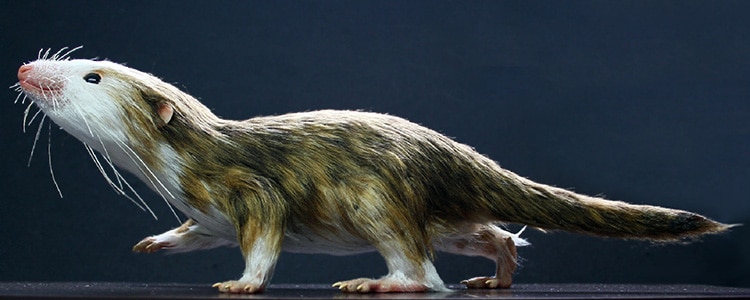Earth never stops! Find out what exciting developments are happening from around the world.

Scientists have discovered that mammals successfully evolved over the years by getting smaller in size.
The origin of modern mammals can be traced back more than 200 million years to the age of dinosaurs. But while dinosaurs evolved to become some of the largest land animals, for the following 150 million years the ancestors of all modern mammals pursued an entirely different strategy – getting very small.
Modern mammals are unique in having a lower jaw consisting of just a single bone that bears teeth. In contrast, all other vertebrates possess complex lower jaws formed by at least five or more bones joined together. In the course of evolution, fossils show that the lower jaw of mammalian ancestors became simplified and a new jaw joint was formed, while some of the other bones moved into the middle ear to aid in hearing. The team of scientists, from the UK and the US, wanted to find out how it was possible for mammals to simplify and restructure their lower jaws, while maintaining the ability to feed and hear. Using modern computer analysis to scan fossil skulls and lower jaws, they looked at what happened to the skeleton of our tiny mammal ancestors.
Their results showed that the small size of the fossil mammals significantly reduced the stresses in the jaw bones when feeding, while still being powerful enough to capture and bite through prey, such as insects.

Dr Nicola Masey has found that a new system can accurately model air quality in large cities like London in minutes, within five metres of any given location using just a standard office computer.
Air pollution monitors are stationed in cities and towns across the UK, but they only report pollution once it has happened. That means they can’t predict when air quality might change. Also, they only monitor a specific location, while air quality can vary substantially over small areas.
The new RapidAir® software, developed by a company called Ricardo, can predict what air quality will be depending on various factors. To find out if it was accurate, Nicola looked at historic pollution records from 86 sites across London and compared them to estimates from RapidAir. The software’s results matched records, showing that it was a good predictor.
Her research, which ran in parallel to the development of the RapidAir model by Ricardo, investigated the use of well-known mathematical equations to simulate the concentration of pollutions on built-up roads – sometimes called ‘street canyons’. She compared these with concentrations estimated with another method that estimates how densely built-up an area is.
For example, urban designers often look at things such as the amount of sky that can be seen, hill shade and wind effect to assess warmth and shade, but until now these factors have not been widely used in air pollution studies.
NERC Associate Director, Operations & Research Careers, Robyn Thomas said:
Air pollution is a pressing issue in the UK and internationally. We fund high-quality scientific research and innovation to advance our understanding of the sources and impacts of poor air quality, including funding researchers working with industry, business and government. As part of her NERC CASE studentship, Dr Masey’s work with Ricardo will help cities and people plan their air pollution exposure to minimise risks to health.